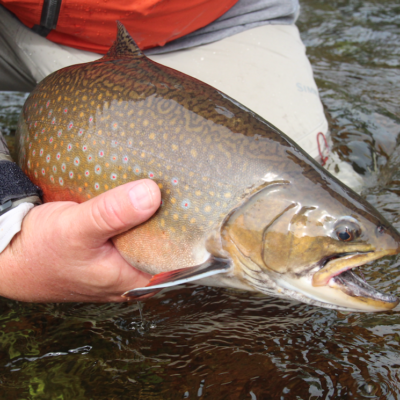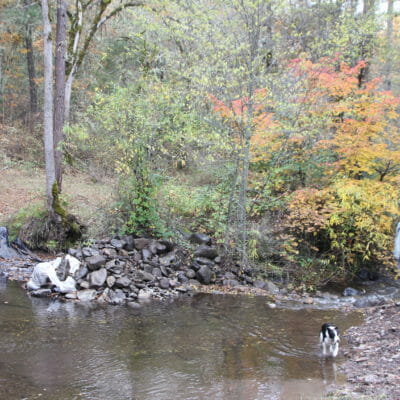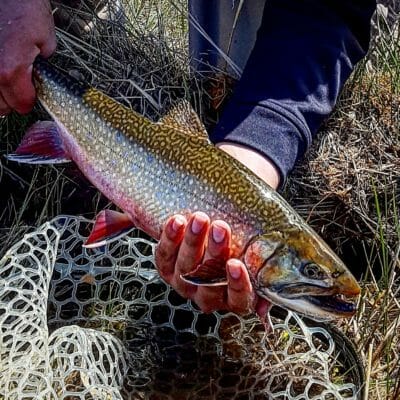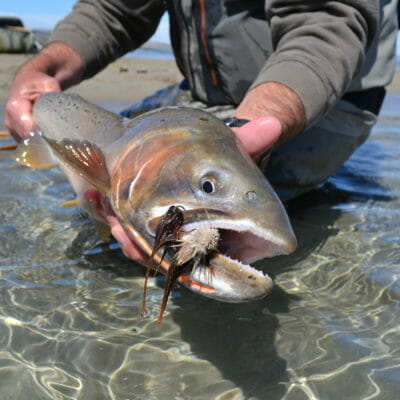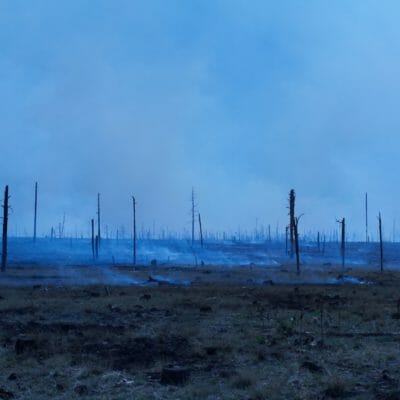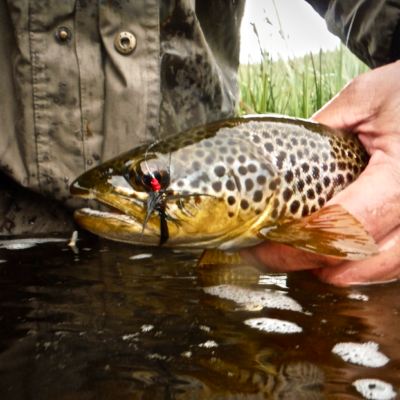Above: Native brook trout from the northwest Ontario interior. Photo courtesty of Paul Smith. Below: The author holds a brook trout from Argentina’s Corcovado River. When those of us here in the lower 48 think of brook trout, we might think of boulder-hopping in a secret Appalachian canyon that has managed for more than two
Krumweide point-of-diversion, Salt Creek, Rogue River watershed, Oregon. Photo Brian Barr/RRWC By Chrysten Lambert Southern Oregon is an angler’s paradise. Here, we are blessed with multiple species of game fish—native redband trout, steelhead and salmon primary among them. As in many other parts of the West, many of these species—particularly those that require cold water
It’s been a rough spring for a lot of fly anglers in the interior West. It was winter until not very long ago, and now that epic snowpack is melting. The meadows at our home place are under anywhere from a few inches to several feet of water. All the places we like to fish
A Bear River cutthroat landed at Bear Lake in Utah. Courtesy Paul Thompson/Utah DWR. By Brett Prettyman As a kid my boundaries were marked by street names. Pinehill Drive. Arrowhead Lane. Vine Street. State Street. The borders eventually expanded to counties, forests, states and countries. While driving over a mountain pass recently I realized at
Editor’s Note: Five students from the TU Costa 5 Rivers Outreach Program have embarked on a once-in a-lifetime journey in pursuit of 16 native trout species, all on public lands. With support from the U.S. Forest Service, Costa Sunglasses, Simms Fishing Products, Fishpond and Post Fly Box, these students will tell the stories of our
By Chris Hunt The thermometer on my dash read a cold 33 degrees. The calendar claimed it was June 13. Sadly, both were accurate. Welcome to Yellowstone. As I topped Craig Pass heading north, snowbanks still lined the Grand Loop Road, and more was falling. My wiper blades could keep the the white stuff off
Coalition members celebrate the removal of Veazie Dam on the Penobscot in 2013. A year ago, ocean-going fish in Maine’s Penobscot River regained access to some 2,000 miles of spawning and rearing habitat thanks to the final step in a restoration project designed to bring the Penobscot drainage back to it’s former glory. With the
